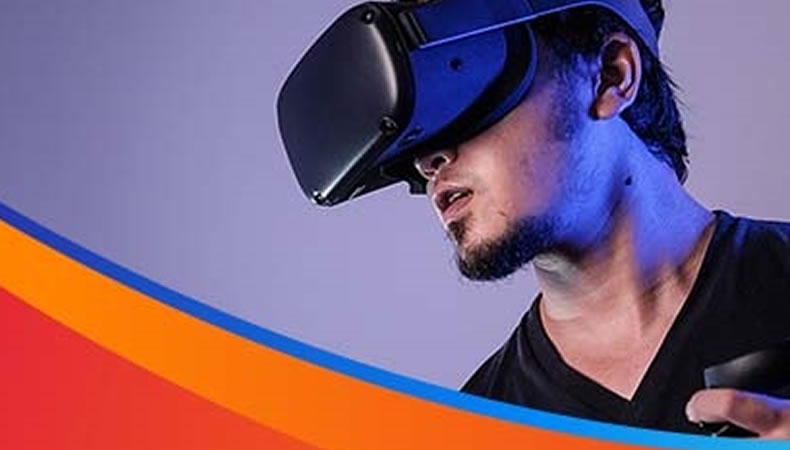Top 10 Buzzwords On Social Media, Throughout The Year 2022

Almost everyone nowadays has been using buzzwords and terms like Bitcoin, Metaverse, Defi, and NFTs in everyday conversation.
Do you actually understand what they mean, though, and how these technologies might alter the world as we know it?
As we transition from a digital present to a virtual reality future, we must keep up with new technologies and all of its wonderful uses in our daily lives.
Here is our list of the key terms in technology that you should understand and explore more.
10 Technology Buzzwords On Social Media In 2022 & Beyond
1. Metaverse
Everyone is asking what the Metaverse is since Facebook changed its name to Meta in order to participate in it.
The metaverse is merely a collection of interconnected 3D virtual environments with a strong emphasis on community-based social interaction and connection.
You can do everything in this virtual environment, including connecting with other users, creating your own avatar, buying, and even playing games with others. Consider it a whole distinct realm where you can spend your second life.
2. DeFi (Decentralized Finance)
Decentralized finance, also known as DeFi, is a new financial technology that gave rise to cryptocurrencies like bitcoin and Ethereum.
DeFi appeals to customers by promising to do away with the fees that banks often demand for their services, allowing you to store your money beyond the banking system and enabling instantaneous money transfers anywhere in the globe without requiring prior authorization.
Through the blockchain, everything is encrypted, and DeFi makes peer-to-peer transactions accessible and safe.
3. Fractionalised NFT
NFTs, or non-fungible tokens as they are known, are becoming increasingly expensive because of the buzz and increased demand.
The average price of an NFT artwork can go into the tens of thousands of dollars, making it relatively challenging for the majority of people to buy one.
Multiple persons may hold a portion of an NFT through fractionalized NFTs. The NFT can be purchased by more people because it is divided into smaller fractions.
4. Extended Reality (XR)
Immersive technology that can combine the real and virtual worlds are crucial for extended reality. Future technology like this could fundamentally alter how we shop!
This already entails putting on clothes virtually or using an augmented reality reflection, but in the future, it might also involve looking for a new house anywhere on the planet while actually being there.
Read | Which social network ranked highest among Gen Z and Millennials in 2022?
5. Web3
We are all familiar with and utilize the internet, but Web3 is simply just an interaction of the internet that is built on the blockchain. This contributes to the internet’s additional layer of security and credibility.
This indicates that decentralization and token-based economies will increase. As a result, no one person will have complete authority over the data, and they won’t be able to change it without the consent of the entire distributed system.
6. Hyper Automation
Hyper automation is a methodical methodology used by organizations to quickly discover and automate as many IT and business operations as they can.
The power of data analytics paired with artificial intelligence and machine learning must be used to help uncover opportunities and implement changes at the same time in order to do this at scale.
7. BUMP On Facebook
BUMP mostly stands for “Bring Up My Post.” You might notice someone posting the word and nothing else on Facebook, Instagram, or another website that allows comments.
This is usually followed by others posting the exact same word. When this occurs, someone is implying that a previous post merits additional consideration.
A succession of bumps can raise the post’s position in users’ feeds and increase engagement. More users who have accessibility to the post will see it in their feeds if you do this.
8. NFS (Network File System)
The network file system is a system that allows computer systems to share files and folders. Network file systems are the foundation of most modern networks.
The network file system is a system that allows computer systems to share files and folders with one another over a network.
Network file systems are the foundation of most modern networks, and they allow computers on a local area network (LAN) or wide area network (WAN) to share data with one another as well as with other computers outside of the LAN or WAN.
9. Distributed Cloud
A distributed cloud architecture is one in which numerous cloud environments are employed to suit business and performance objectives.
This entails using cloud services across several regions. This enables companies to operate their digital operations and procedures more effectively and dependably.
10. 6G Network
The fifth-generation wireless network (5G) has already been launched, and its speeds are much improved over those of previous generations.
However, as we move closer to a world dominated by VR, AR, and the metaverse, faster and higher speeds are required.
The next wireless communication standard, 6G, will combine edge computing, edge blockchain technology, and artificial intelligence to guarantee low latency and speeds that are massive fast.




